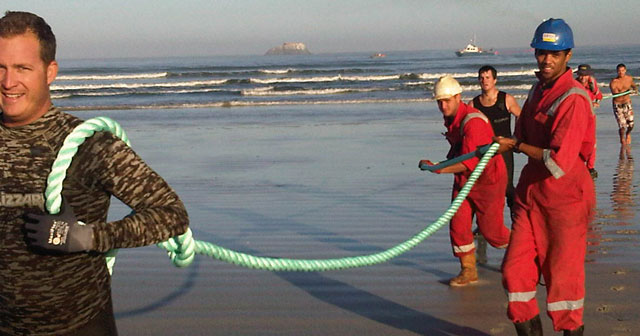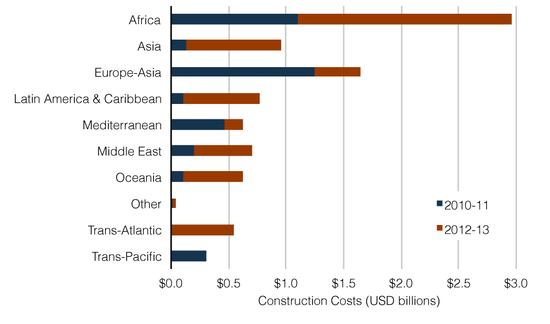
Between 2010 and 2013, investors will spend more on submarine cable systems in Africa than anywhere else in the world, a new report from TeleGeography shows.
Investors are expected to pump almost US$2bn into new undersea cable systems serving Africa in 2012 and 2013, on top of the more than $1bn spent in 2010 and 2011. In the same period, investments in transatlantic fibre will total just over $500m, or about a sixth of the investment going into Africa.
However, TeleGeography reckons not all the cables being planned for Africa will come to fruition.
The data, from TeleGeography’s Global Bandwidth Research Service, shows there has been a surge in submarine cable construction globally in recent years.
In 2010 and 2011, 19 undersea cable systems — worth an aggregate $3,7bn — were launched, and TeleGeography expects the pace of growth to continue to accelerate in coming years.
In 2012 and 2013, 33 additional submarine cable systems are scheduled for deployment, with a projected cost of $5,5bn.
Considering the number of cables already operational, and the fact that many — particularly those directed at connecting Africa — are not being fully utilised, it may seem surprising that additional new systems are being constructed. The findings suggest that capacity constraints are not the driving force behind most new cable projects. TeleGeography says new systems are being deployed for a wide range of reasons, including increasing the diversity of physical routes, reducing latency, achieving strategic advantage, and “the lure of relatively high price margins on some routes”.

The findings suggest that although many of the cables planned between now and 2013 will come online and are already being deployed, some of those planned beyond that may, like many other projects before them, will fail to materialise on account of lack of funding or a lack of support from telecoms carriers.
Some of these projects planned for 2013 and beyond include a number of trans-Arctic systems as well as four cables between Africa and South America. — (c) 2012 NewsCentral Media

